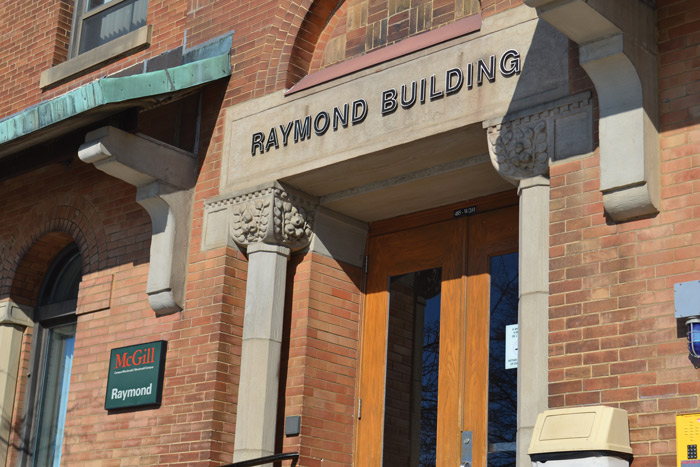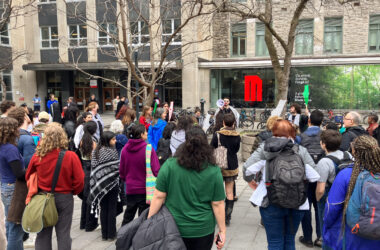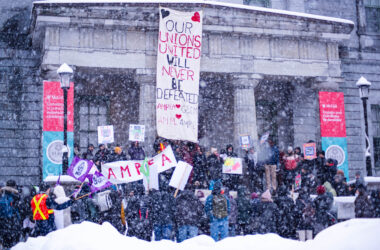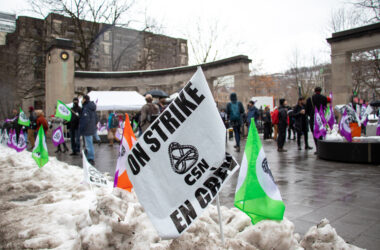Asbestos dangers to workers at McGill University’s Macdonald campus caused Quebec regulators to intervene on three occasions between 2021 and 2023, a new internal report has revealed.
The Internal Audit Final Report of the Macdonald Campus Asbestos Investigation, which was released to the McGill community on Sept. 18, detailed the events leading up to the detection of uncontained asbestos on the Macdonald campus in Winter 2023 and the subsequent building closures. It also set out a 25-point action plan to improve university-wide asbestos policies.
The findings included “a lack of good working practices” by contractors at the Macdonald campus with asbestos and the “cohabitation of Faculty members and students with construction workers.” It also found that the communication protocols used to address building users’ concerns, including from students, about asbestos fibres—which upon inhalation can cause deadly cancers—were of limited effectiveness.
The 84-page report uncovered that the Commission des normes, de l’équité, de la santé et de la sécurité au travail (CNESST)—the Quebec body that enforces workplace health and safety guidelines—intervened on the McGill campus on Nov. 15, 2021, Oct. 17, 2022, and Feb. 14, 2023, to halt construction work because of the asbestos risks. In the Feb. 2023 intervention, a CNESST inspector went further, and used their powers to close the Raymond Building construction site—which students were accessing up until the closure.
In the events leading up to the 2023 intervention, the report revealed that students raised concerns about air quality and dust in the Raymond Building on Nov. 28, 2022. A McGill Environmental Health and Safety (EHS) staff member observed the dust in early December but was not qualified to test it for asbestos, so instead raised the issue with other members of the EHS. But the only EHS staff member qualified to test for asbestos had just gone on leave, so the testing was delayed until Jan. 2023.
Fabrice Labeau, McGill’s Deputy Provost of Student Learning, told The Tribune on the evening of Sept. 18 that the report’s mandate was to learn why asbestos fibres were discovered in the Macdonald campus buildings, and that it summarized the key findings into the 25 recommendations to improve the university’s policies.
In response to questions about the CNESST intervention, Labeau explained that CNESST was providing the asbestos inspection reports directly to the McGill-hired contractors rather than the McGill administration. He added that one of the recommendations included “strengthening” the oversight for contractors doing work at McGill, as “typically their contractual obligations are such that it should all work out in the right way, and sometimes there’s slippages here and there.”
He also said that despite the intervention, he was not concerned about any “specific” risk to students.
“It’s very hard to pinpoint a specific detail from the report […] and say, ‘does that pose any specific risk?’” Labeau said. “The key point to me is […] that over the whole duration of the closure of the buildings […] and even before that, all the air tests in the building […] had the content of asbestos that was below the standard in Quebec, meaning that it was safe to be in the building during all these times.”
The World Health Organization, however, recognizes no known safe threshold to asbestos exposures, stating that countries must impose extremely low control limits or remove the asbestos completely to minimize the risks. In Quebec, the construction code now sets the asbestos airborne control limit at 0.1 fibres per centimetre cubed (f/cm3)—lowered from 1 f/cm3 in 2022. McGill adopts a more stringent standard of 0.01 f/cm3. A Tribune investigation published on Sept. 6 showed that asbestos is still Canada’s number one workplace killer.
Labeau has since clarified in a media round table on Wednesday, Sept. 20, that “using the term safe is a difficult term […] what we do is follow the provincial code here that basically limits the presence of fibres in the air.”
Norman King, an epidemiologist who is scientific advisor to the Québec Association of Asbestos Victims, explained to The Tribune that even when the limits are set extremely low, the risks remain.
“When we consider a concentration of 0.1 fibers/cm3, it seems like a very small amount of asbestos fibres. However, it is important to realize that there are 1,000 cm3 in one liter and that we breathe at least 5 liters of air per minute—more when we are working hard,” King said. “So, at a concentration of 0.1 f/cm3, we are breathing in 500 asbestos fibres per minute. This translates to 1 million fibres during the course of a 35-hour work week.”
Asbestos, a known carcinogen, is safe when left intact; it becomes dangerous when the material is damaged and its dust fibres are exposed. Buildings across Canada used the mineral from the 1930s to the 1980s as an insulator due to its heat-resistant properties. McGill acknowledges on their EHS website that many of its buildings still contain asbestos, and provides information to the school’s community on the asbestos in each building through its asbestos web database.
McGill’s senior administration requested the internal investigation at the start of 2023 following the asbestos-related building closures. At the time, there was no mention to the university-wide community that the CNESST had closed the Raymond construction site.
Pascal Théoret, Executive Director of the Internal Audit, confirmed to The Tribune in a statement through the McGill Media Relations Office that the mandate of the investigation received “full cooperation” from internal and external stakeholders, and that it completed all its elements of that mandate: To understand the events leading up to the detection of the uncontained asbestos at Macdonald campus.
The investigation’s 25 recommendations range from three-month, short-term tasks to longer 12-month tasks. This report detailed the more pressing recommendations with all the others to be detailed by Oct. 30.
Principal and Vice-Chancellor Deep Saini said in a Sept. 18 message to the McGill community that he is accepting all 25 of the report’s recommendations and that he would be tasking Provost and Vice-Principal Christopher Manfredi with the responsibility of carrying out the Task Force’s action plan. In the same correspondence, Manfredi stated that the report has prompted a review of all ongoing university construction projects and that McGill staff have been told to pause work that may involve materials containing asbestos.
The university is hosting two town halls about the report on Friday, Sept. 22. The first will be in person at the Centennial Centre ballroom on Macdonald campus at 10 a.m. and the second will be held online at 2 p.m. The events are open to all students and staff and require registration.
The CNESST did not respond to The Tribune’s request for comment before the publication deadline.









